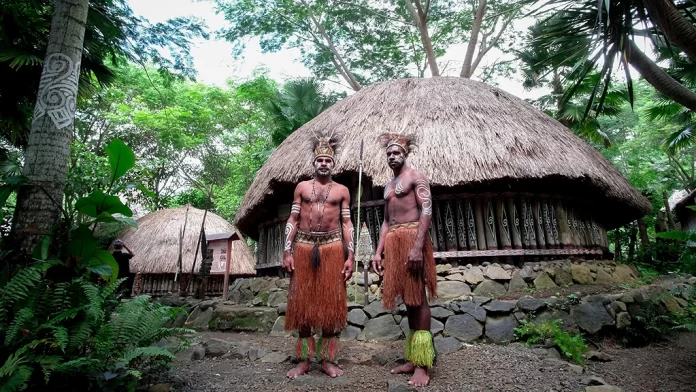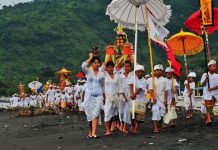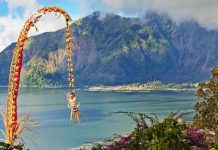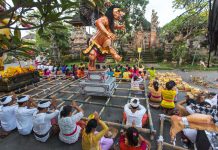Indonesia is a very diverse country with thousands of islands. No wonder that it is home to many different tribes and cultures. Each tribe has its own unique characteristics
and identity. Indonesia still has many indigenous tribes living in the remote regions and following their traditional cultural practices.
Here are 8 unique Indonesian tribes, with number 5 being not only unique but also extreme!
1. Mentawai Tribe
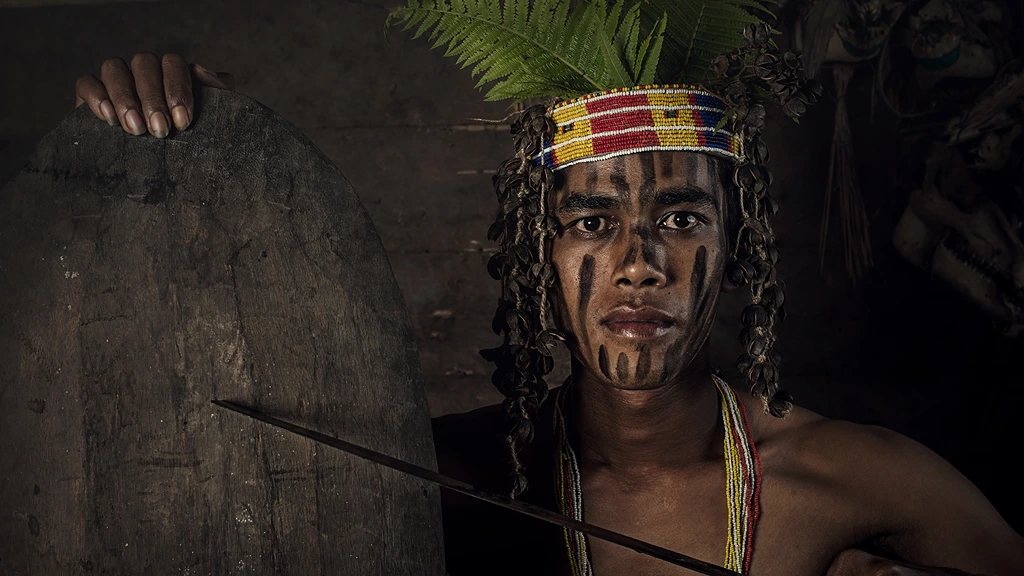 The home for the Mentawai tribe is in the Mentawai Islands, Siberut Island, West Sumatra. It is one of the oldest and remotest tribes in Indonesia. This tribe adheres to a belief called Sabulungan – that objects have a spirit and a soul. They live in sturdy wooden houses on stilts called Uma, inhabited by five to seven families with the same ancestry. The lower part of the house is used to raise livestock, such as pigs. They also organize gatherings and weddings at their communal ‘Uma’.
The home for the Mentawai tribe is in the Mentawai Islands, Siberut Island, West Sumatra. It is one of the oldest and remotest tribes in Indonesia. This tribe adheres to a belief called Sabulungan – that objects have a spirit and a soul. They live in sturdy wooden houses on stilts called Uma, inhabited by five to seven families with the same ancestry. The lower part of the house is used to raise livestock, such as pigs. They also organize gatherings and weddings at their communal ‘Uma’.
The Mentawai tribe’s shaman is called Sikerei, who are required to have tattoos made of charcoal, while the Mentawai community is not obliged. For this tribe, tattoos are an identity that describes the balance between forest dwellers and nature. Another Metawai tradition is the sharpening of teeth which is done by Mentawai tribal women. The language used by the Mentawai Tribe is the Mentawai language with three dialects, namely the South Siberut dialect, the Sipora/Sioban dialect, and the Sikakap dialect. This tribe also has four major clans, namely Samakalek, Samoilanggan, Taporuk, Saimpunuk.
2. Baduy Tribe
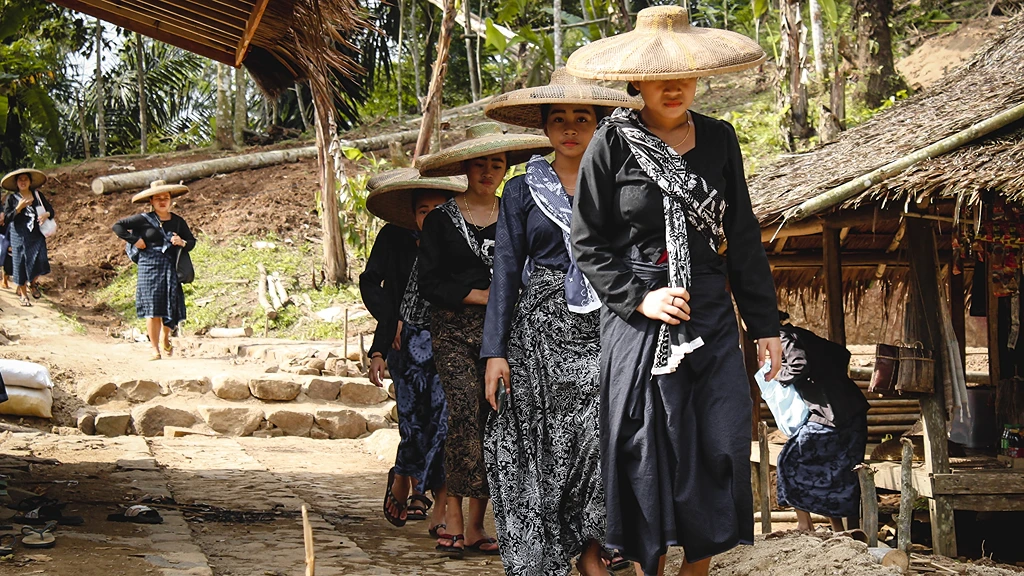 This tribe is also called urang Kanekes. They live in a village in the Lebak Regency, Banten. The Baduy tribe is divided into two regions, namely the Baduy Luar (Outer Baduy) and the Baduy Dalam (Inner Baduy). Both areas are bordered by a bamboo hut. Baduy Dalam strictly adhere to their customs, such as not being allowed to use footwear, electronic devices, cameras, modern clothes, and vehicles as a means of transportation. Baduy Dalam has a tribal chief named Pu’un who determines the planting and harvesting times, applies customary law, and treats the sick.
This tribe is also called urang Kanekes. They live in a village in the Lebak Regency, Banten. The Baduy tribe is divided into two regions, namely the Baduy Luar (Outer Baduy) and the Baduy Dalam (Inner Baduy). Both areas are bordered by a bamboo hut. Baduy Dalam strictly adhere to their customs, such as not being allowed to use footwear, electronic devices, cameras, modern clothes, and vehicles as a means of transportation. Baduy Dalam has a tribal chief named Pu’un who determines the planting and harvesting times, applies customary law, and treats the sick.
The Baduy Dalam fast three times for three months named Kawalu. During Kawalu, tourists are only allowed to visit the Baduy Luar and are not allowed to stay overnight. Baduy Dalam clothes are white which symbolizes purity, while Baduy Luar clothes are black. The Baduy Luar have been influenced by outside cultures, such as using soap, electronic devices, and allowing outsiders to stay overnight. The Baduy embrace the Sunda Wiwitan religion, which is a syncretism between Islam and Hinduism.
3. Korowai Tribe
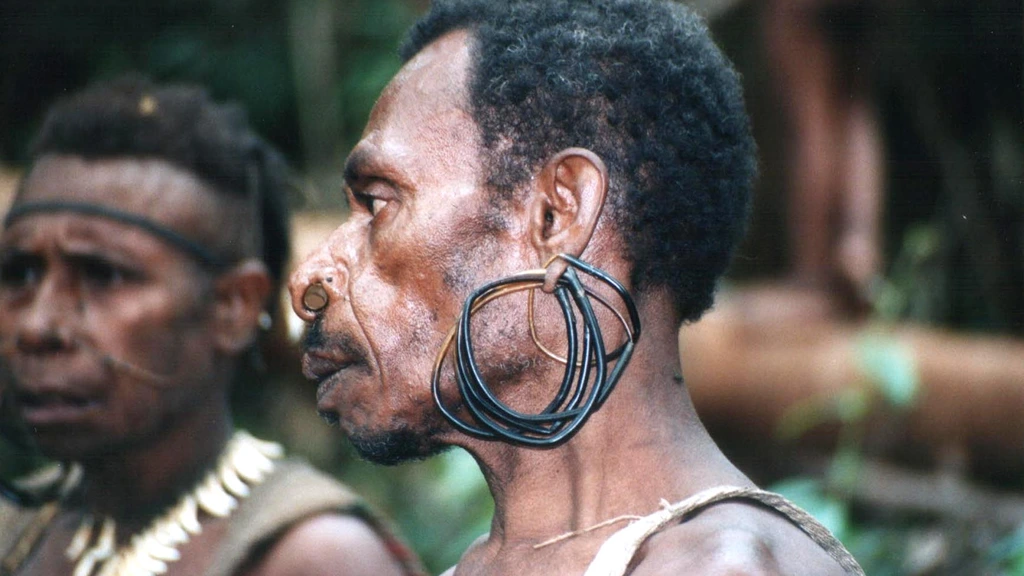
The Korowai tribe, also known as Klufo Fyumanop, inhabits several districts in the Anim-Ha customary territory in southern Papua. The name Klufo Fyumanop comes from the words Klufo (people) and Fyumanop (walking on the bones of the feet). They move around on foot, then build houses amonst tall trees. Their houses can reach 70 meters above a large tree. Even though they move around, the Korowai tribe highly respects the boundaries of the customary territory of other tribes in the southern part of Papua. Every clan keeper knows and always guards the boundaries of his territory.
The Korowai people are divided into two, namely the Iron Korowai and the Batu Korowai. Korowai Besi or Iron Korowai have accepted modern civilization with iron tools, such as axes, iron, iron knives, iron machetes and so on. Meanwhile, Korowai Batu or Stone Korowai live still in the stone age and have not been touched by modern civilization. Even though they are different, their language remains the same, namely the Klufo language. In terms of marriage, the means of payment for dowry to the Korowai people are bono or rope, dog teeth (banggil) and pigs (gool). The determination of the amount of the dowry is based on the request of the bride’s parents.
4. Asmat Tribe
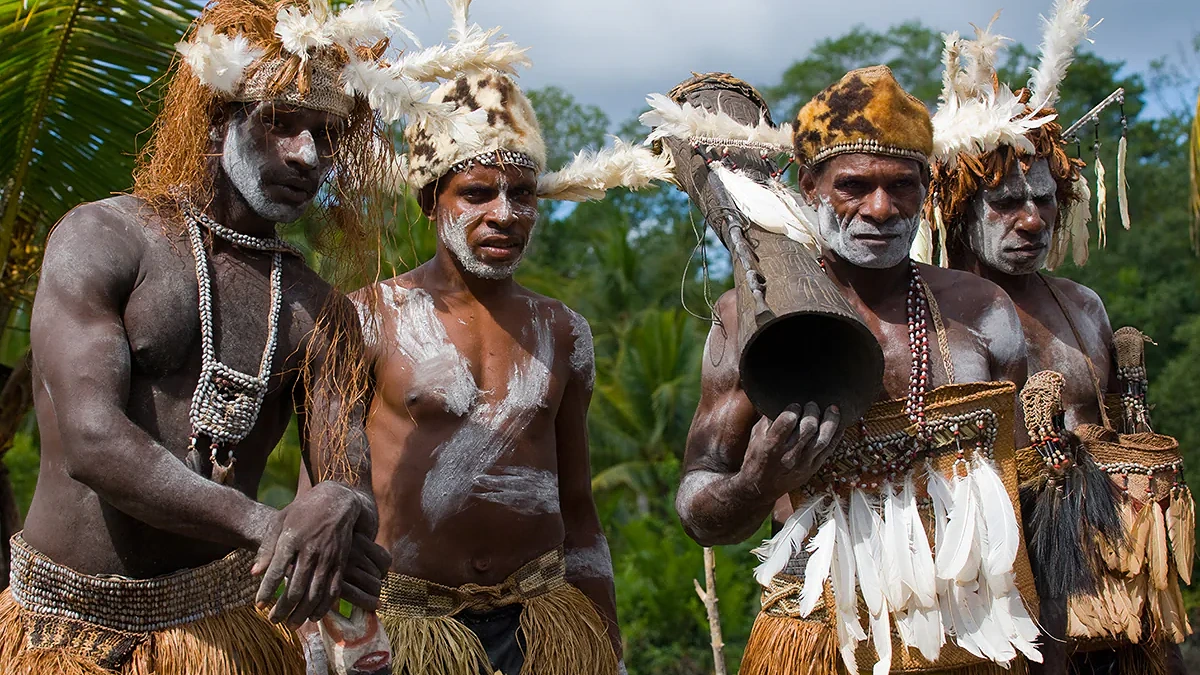
The home of Asmat tribe is Papua. They are divided into two, namely the coast and the interior. This difference in location makes the lifestyle, way of thinking, social structure and daily life of the two categories of the Asmat tribes very different. The Asmats in the interior work as hunters and farmers, while those who live on the coast work as fishermen. Physically, the Asmat tribe have black skin color and curly hair as they have descended from the Polynesian people.
The Asmat are known as amazing carvers and are internationally recognized. The Asmat have dances and songs to welcome guests, face the harvest season, and rituals of respect for ancestral spirits. They have a tradition of preserving the bodies of tribal chiefs or traditional heads.
Male members of the tribe reside in groups in houses (Beorpit). Every village has its own traditional hous, known ‘Jew’ house and is the center of Asmat life. The rectangular house with an area of 10 x 15 meters stands on stilts and is built without any nails. The wood is joint only specific rattan roots. Women in the Asmat community are only allowed to enter the Jew, when there is a party or traditional ritual.
5. Dani Tribe
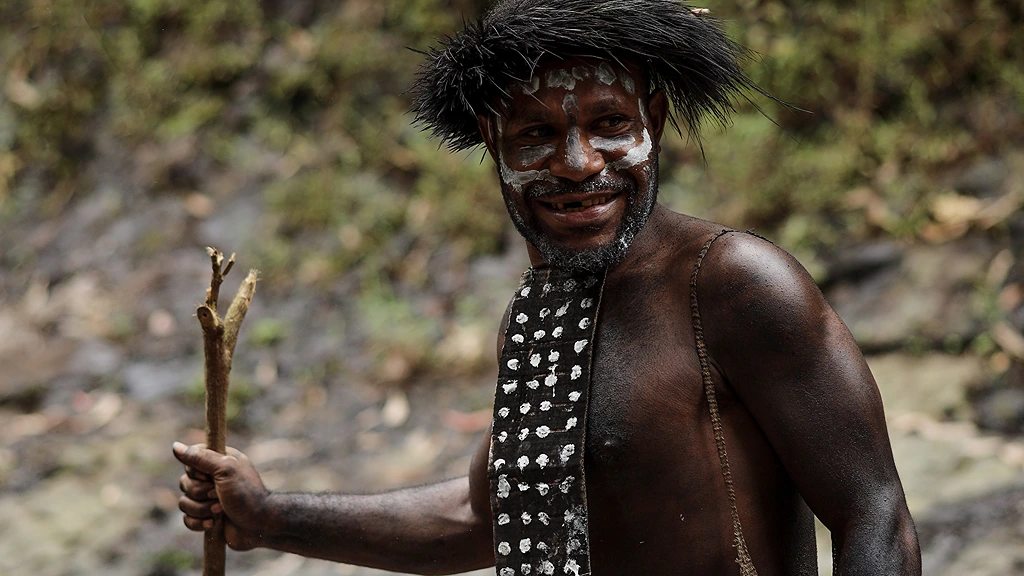 The Dani tribe has inhabited the Baliem Valley area since hundreds. They are farmers and adept at using various types of tools. The Dani tribe is said to have a brotherly relationship with the Lani and Yali tribes who live on the slopes of the southeastern Jayawijaya Mountains. Although known as a hard-tempered tribe, the Dani tribe is classified as a warm tribe and is ready to welcome tourists with lively traditional dances and songs. Tourists can also stay in the wooden houses of local residents.
The Dani tribe has inhabited the Baliem Valley area since hundreds. They are farmers and adept at using various types of tools. The Dani tribe is said to have a brotherly relationship with the Lani and Yali tribes who live on the slopes of the southeastern Jayawijaya Mountains. Although known as a hard-tempered tribe, the Dani tribe is classified as a warm tribe and is ready to welcome tourists with lively traditional dances and songs. Tourists can also stay in the wooden houses of local residents.
The staple food of the Dani is cooked on banana leaves or taro leaves. In addition, they usually eat sago and sweet potatoes cooked on cassava leaves. The Dani tribe has a fairly extreme way of showing grief over the death of a loved one, namely by cutting their fingers. This tradition, namely Niki Paleg, must be done on the demise of family members or closest relatives such as father, mother, brother and sister.
6. Bajau Tribe
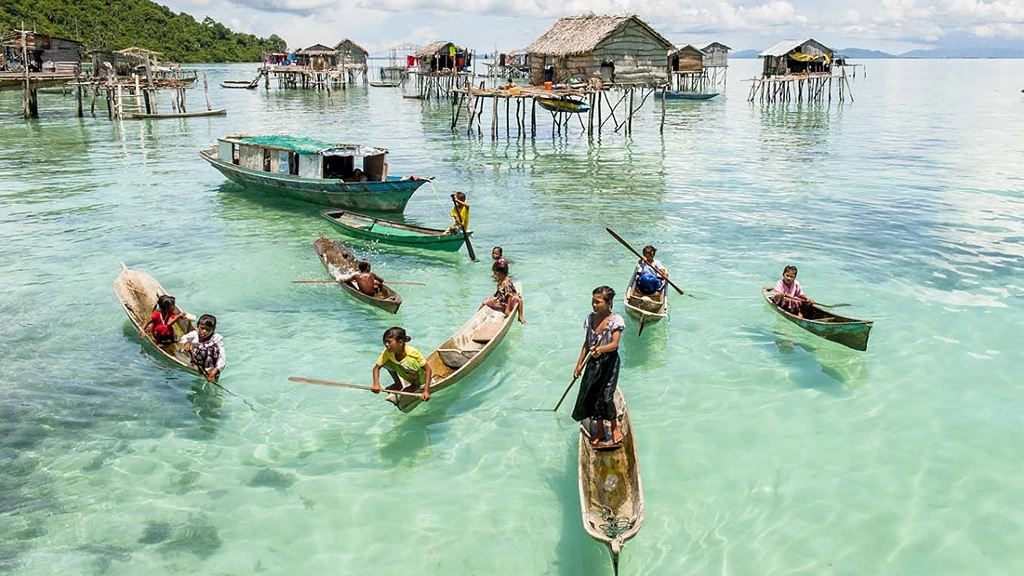
The Bajo tribe is an ethnic group from Southeast Asia, scattered in several territorial waters of Sulawesi, East Kalimantan, Maluku, Nusa Tenggara, to the east coast of Sabah (Malaysia) and the Sulu Islands (Philippines). The Bajau use the Sama-Bajau language. The Bajo people are known to great divers. This ability is the result of adaptation of the Bajo people who live at sea for almost 24 hours. The Bajau tribe – whose residents are mostly Muslim, have many names, such as sea people, Bujuus, Celates, Bajau or Bajo. Meanwhile, Bajau people call themselves the Same People.
Initially the Bajo people lived in boats that floated in the ocean. However, more and more Bajo people are starting to live on land, on the shores or above shallow sea waters, with homes on piles to avoid tidal waves. Fishing is the main source of livelihood for the Bajo. They catch fish by fishing, netting, and archery. The catch will be sold to communities around the coast or nearby islands.
7. Lamalera Tribe
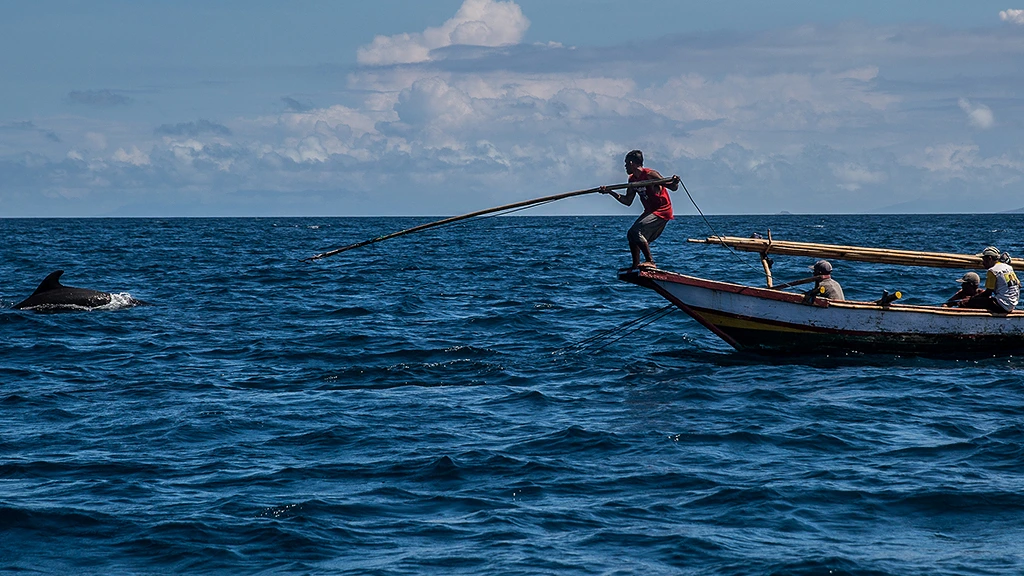 The Lamalera tribe have a tradition of whaling on the island of Lembata, East Nusa Tenggara (NTT) every year. The island is located between Mount Lewotolok, Ililabalekan and Iliwerung. Sperm whales (Physeter macrocephalus) are often caught by the people of Lamalera in a 500 year old tradition. This tradition became famous a tourist attraction . The whale hunter is called lamafa, while whalers’ weapons are called tempuling. Tempuling is a bamboo stick or stick with a sharp and pointed iron tip.
The Lamalera tribe have a tradition of whaling on the island of Lembata, East Nusa Tenggara (NTT) every year. The island is located between Mount Lewotolok, Ililabalekan and Iliwerung. Sperm whales (Physeter macrocephalus) are often caught by the people of Lamalera in a 500 year old tradition. This tradition became famous a tourist attraction . The whale hunter is called lamafa, while whalers’ weapons are called tempuling. Tempuling is a bamboo stick or stick with a sharp and pointed iron tip.
8. Abui Tribe
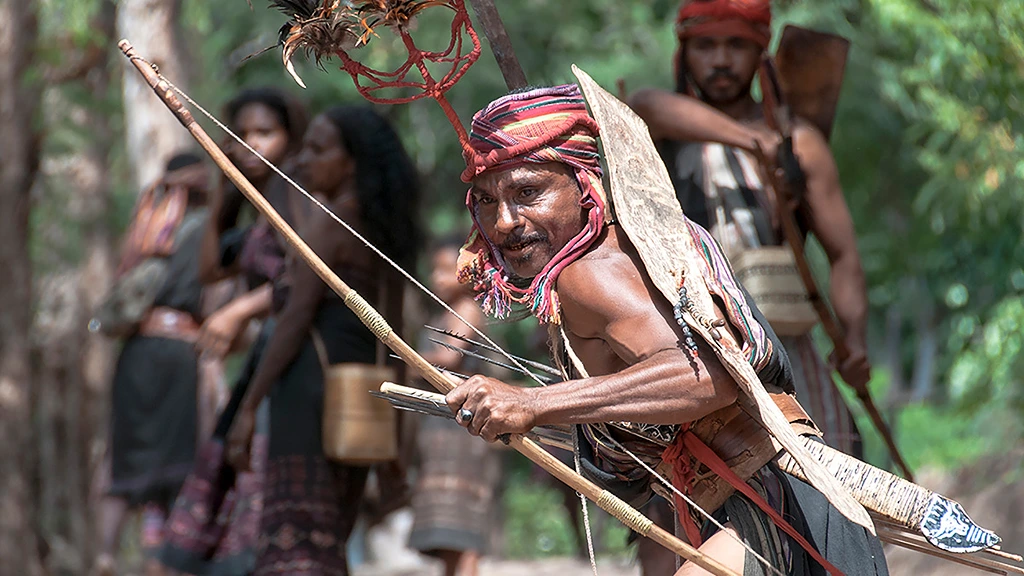 The Abui tribe lives at Takpala village in Alor Islands of East Nusa Tenggara. The Abui tribe will welcome guests or tourists with dances and songs performed by the ‘Mama’. The friendliness of the Abui Tribe has earned them the title of being the happiest and most approachable tribe in Indonesia. The Abui people use the Abui language, an acculturation of the Papuan, Alor and Makasai languages, for their daily conversations.
The Abui tribe lives at Takpala village in Alor Islands of East Nusa Tenggara. The Abui tribe will welcome guests or tourists with dances and songs performed by the ‘Mama’. The friendliness of the Abui Tribe has earned them the title of being the happiest and most approachable tribe in Indonesia. The Abui people use the Abui language, an acculturation of the Papuan, Alor and Makasai languages, for their daily conversations.
This tribal society adheres to animism. However, now more than 50% of the Abui people embrace Protestant Christianity. To fulfill their daily needs, the Abui people only depend on forest products. Forest products are in the form of seeds. Residents will make souvenirs from the seeds and sell them to visitors who come to the village. The Abui tribe still uses a stove made of stone for cooking.
Have you ever visited any of the tribes above? Which tribe do you think is the most unique? Share your experience in the comment section below.

